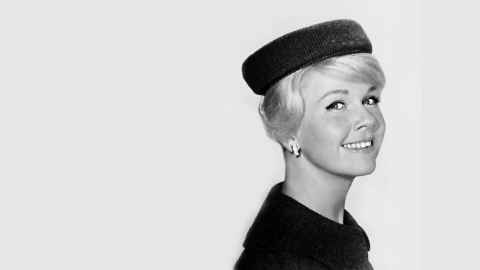Reflections on what’s so great about Doris Day
20 February 2020
The late actor and singer Doris Day is widely considered one of the best voices of the 20th century, but what made her stand out from the crowd, and for so long?

Doris Day is one of several mid-20th century Hollywood singers and actors to attract the research attentions of Dr Gregory Camp, musicologist at the School of Music, University of Auckland.
He’s now writing the book, Scoring the Hollywood Actor in the 1950s, in which he explores how music was used to shape and ‘sell’ Hollywood cinema and its stars.
1950s Hollywood ushered in a period of experimentation in acting styles, such as that of Marlon Brando and James Dean, says Dr Camp, and composers worked in different ways to create music to suit a new style of acting. That led to the first mostly atonal score, as composed by Leonard Rosenman for Elia Kazan’s East of Eden, starring James Dean.
Yet the avant-garde existed alongside the more conventional, such as movies starring Doris Day; the type of songs she got to sing shaped the creation of the ideal “girl next door” who (by the end of the movie) usually became the “ideal housewife”.
In her first movie Romance in the High Seas (1948), when she was largely unknown, you can see the studio working out what type of star she’d become, says Dr Camp.
“In that movie, you can see the studio trying her out on different styles to see which style was going to stick. Is she going to be the ballad singer? Or is she going to be the cool jazz girl? Or is she going to be the peppy up-tempo type?”
She probably could have been anything, he says, but was most comfortable with the ballad and Hollywood did like to pigeon-hole its stars. “That made them easier to sell, a more marketable commodity,” he says.
In that movie, you can see the studio trying her out on different styles to see which style was going to stick. Is she going to be the ballad singer? Or is she going to be the cool jazz girl?

Dr Camp (who is a choral singer, as well as musicologist) also explores what exactly was so outstanding about her voice. “Film critics usually don’t have the vocabulary to talk about voice. They might say it’s ‘nice and pretty’ but it is hard to describe what makes it so pretty.”
What’s so great about Doris Day? Where do we start? As he told Jesse Mulligan, on RNZ’s Afternoons programme, she had, for instance, extraordinary breath control.
“You can hear that in smoothness of what’s called a passaggio break, the shift from one register to another. She was able to bring her lower register into the higher and vice versa, and cover up that break.” You can also hear it in the way she sang her consonants — her consonants actually have a pitch. “So the consonants are the same pitch as the vowel that follows.”
“Also she has great control over her belt register. The belt is the chesty louder singing and she can integrate that into her head voice. She isn’t really a belter but harnessed the power of the belt, the volume and the amplitude, while keeping the beautiful tone of the head-voice.”
He adds: “A voice like Doris Day’s doesn’t come along very often, and we all know it when we hear it.”
Media contact
Margo White I Media adviser
DDI 09 923 5504
Mob 021 926 408
Email margo.white@auckland.ac.nz